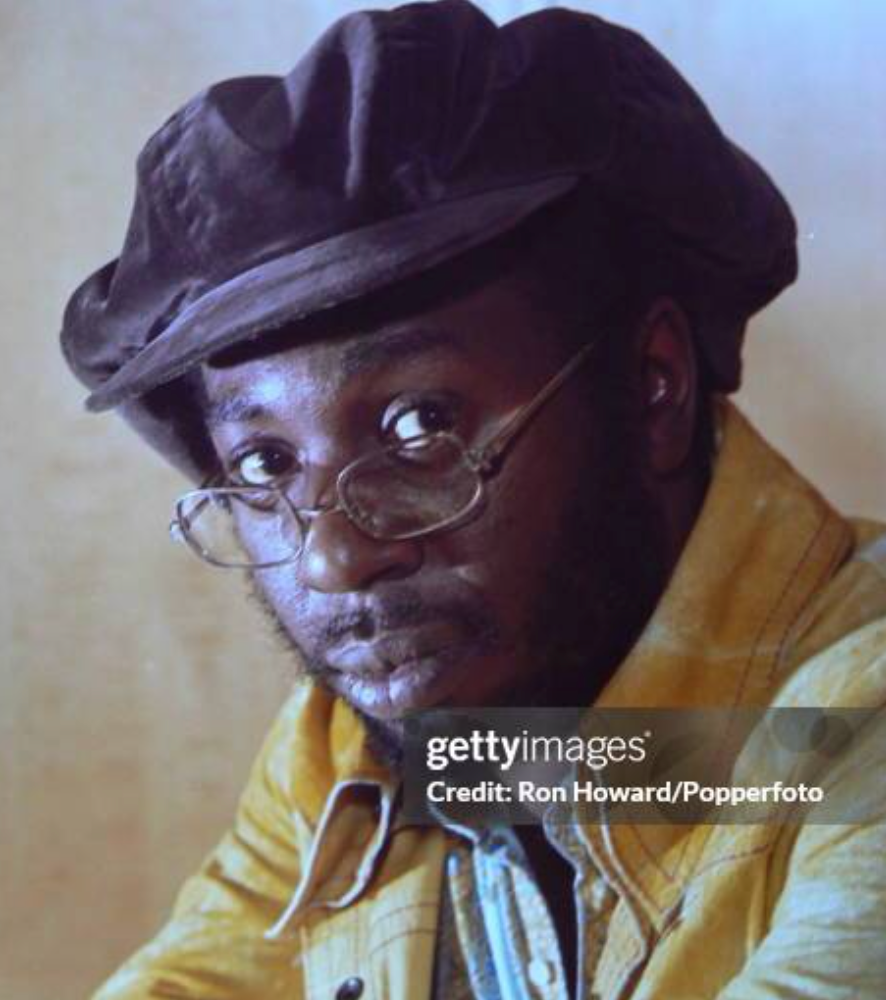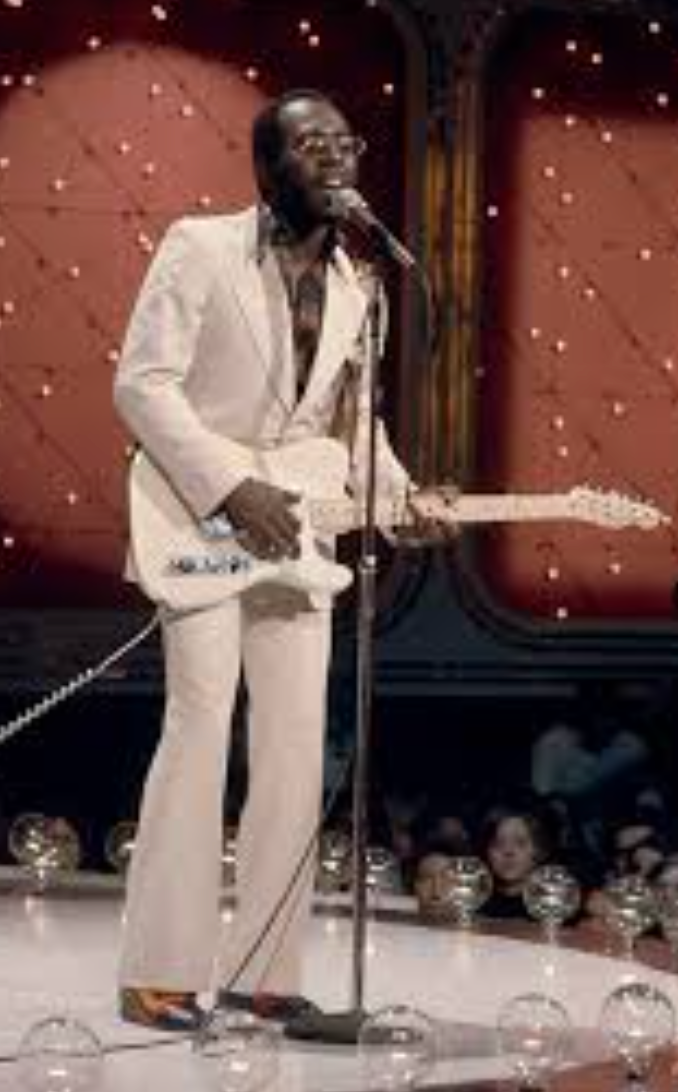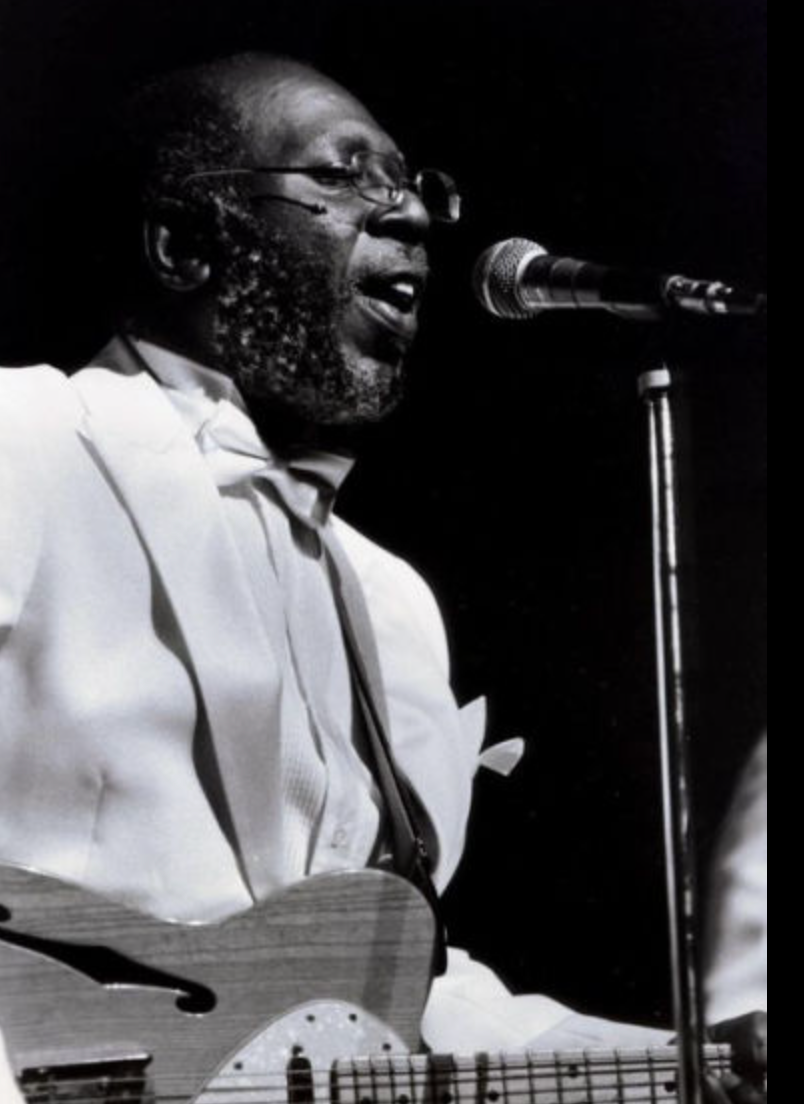- The Gooch

- Mar 7
- 10 min read
Updated: Apr 2
The Story of The Meters: From Humble Beginnings to Funk Pioneers
In the mid-1960s, in the vibrant musical heart of New Orleans, a group of young musicians unknowingly laid the groundwork for what would become the blueprint of funk.

The Meters weren’t just another band; they were a sonic force, blending deep-pocket grooves with a raw, stripped-down style that would influence countless artists across funk, rock, and hip-hop.
But to understand their rise, we have to go back to their roots—when four gifted musicians, all steeped in the rhythms of their hometown, came together to create something groundbreaking.
The Early Days: The Birth of a Groove
The story begins with Art Neville, a young keyboardist with a knack for soulful melodies and a natural leadership presence.
By the early 1960s, Art had already made a name for himself with The Hawketts, recording the now-classic New Orleans anthem Mardi Gras Mambo. After a stint in the Navy, he returned home and began forming a new group—one that would focus on tight instrumentals, infectious rhythms, and an unmistakable New Orleans funk feel.

Neville first linked up with George Porter Jr., a talented bassist who had been cutting his teeth in local bands. Porter had a deep, rolling groove, the kind that made your body move before you even realized it. His style would later define the band’s sound, anchoring their music in an undeniable pocket.
On guitar was Leo Nocentelli, a master of sharp, syncopated riffs. Nocentelli’s playing wasn’t about flashy solos—it was about rhythm, feel, and a sense of space. His choppy, percussive approach would become one of The Meters' signature sounds, inspiring generations of funk guitarists.

Finally, there was Joseph "Zigaboo" Modeliste, the drummer whose explosive yet controlled beats redefined what funk drumming could be. Zig’s drumming didn’t just keep time—it danced, it breathed, and it pushed the groove forward with a syncopation that few had heard before.

Together, these four musicians didn’t just play music—they communicated through rhythm, locking in so tightly that their jams felt effortless, hypnotic, and deeply infectious.
The Formation & Breakthrough
By 1965, Art Neville, George Porter Jr., Leo Nocentelli, and Zigaboo Modeliste were playing together as a backing band for various New Orleans artists.
Under the guidance of legendary producer Allen Toussaint, they became the go-to session musicians for many of his productions. But Toussaint saw something special in them—not just as sidemen, but as a band with their own identity.
Toussaint and Marshall Sehorn, a well-known New Orleans music figure, helped the group land a deal with Josie Records, and soon, The Meters were born.

The Meters (1969) – A New Funk Sound
In 1969, The Meters released their self-titled debut album, The Meters. Unlike many funk bands of the era, The Meters didn’t rely on big horn sections or overly polished production. Their music was raw, stripped down, and all about the groove.
The album’s opening track, "Cissy Strut," became an instant classic—its tight guitar riff, rolling bassline, and infectious drum groove were pure funk perfection. The song climbed the Billboard R&B chart, proving that this new style of funk had mass appeal. Other tracks, like "Sophisticated Cissy" and "Ease Back," showcased their deep grooves and hypnotic, minimalist approach.
Unlike James Brown’s band, which emphasized the leader’s vocals and call-and-response energy, The Meters let the instruments do the talking. The result? A gritty, instrumental funk style that set them apart from anyone else at the time.
Look-Ka Py Py (1970) – Refining the Groove
Building on the success of their debut, The Meters returned in 1970 with their second album, Look-Ka Py Py. This record saw the band refining their sound even further, locking into even tighter grooves with an almost telepathic connection between the members.

The title track, "Look-Ka Py Py," is a masterclass in funk rhythm—Zigaboo’s drum work is more intricate, Nocentelli’s guitar more staccato, and Porter’s bass more driving than ever. The album also features "Pungee" and "Oh, Calcutta!", which further established their signature deep-groove, no-frills approach.
This album wasn’t just about musicianship—it was about feel. The Meters were making music that sounded effortless but was technically complex, a balance few could achieve.

The Meters’ Influence & Legacy
By the time they released their first two albums, The Meters had already built a reputation as funk pioneers. Their sound would go on to influence everyone from The Red Hot Chili Peppers to hip-hop producers like Dr. Dre, who frequently sampled their grooves.
Though their early work was instrumental, their impact was massive. They weren’t just playing music—they were creating a language of rhythm that would inspire generations of musicians.
As the 1970s progressed, The Meters would expand their sound, add vocals, and eventually evolve into a larger funk powerhouse. But their first two albums remain some of the purest, most essential funk ever recorded.

Their journey had only just begun, but with The Meters and Look-Ka Py Py, they had already secured their place in music history.
The Meters: Funk’s Evolution Through the 1970s
By the early 1970s, The Meters had already carved out their place in history with their first two albums, The Meters (1969) and Look-Ka Py Py (1970). Their stripped-down, hypnotic grooves had proven that funk didn’t need elaborate horn sections or complex arrangements to hit hard. It just needed the right feel, and The Meters had it in abundance.

As they moved into the next phase of their career, The Meters began expanding their sound, incorporating more complex song structures, occasional vocals, and deeper experimentation—all while keeping their signature groove intact.
Struttin’ (1970) – A Funk Band Finding Its Voice
Fresh off the success of Look-Ka Py Py, The Meters wasted no time releasing their third album, Struttin’, in the same year. While still heavily instrumental, this record saw the band introducing more vocals, signaling a gradual shift toward a fuller, more song-oriented sound.

One of the album’s standout tracks, "Chicken Strut," features playful, clucking vocalizations over a tight groove, showing off their New Orleans humor while staying true to their funk roots.
Other tracks like "Same Old Thing" and "Tippi-Toes" kept the infectious, syncopated rhythms that had already made them legends in the making.
This album also demonstrated Leo Nocentelli’s evolving guitar work—his rhythms were even sharper, his phrasing more intricate. George Porter Jr.'s basslines were beginning to take on a more melodic role, weaving between the drums and keys with a fluidity that few bassists could match.

Even as they dabbled with vocals, The Meters remained a band built on feel, and Struttin’ was proof that they weren’t just a flash in the pan. They were here to stay.

The Move to Reprise Records
Up until this point, The Meters had been releasing music under Josie Records, but by the early 1970s, Josie had folded. This led to a new opportunity: The Meters signed with Reprise Records (a subsidiary of Warner Bros.), opening the door for them to reach a larger, more mainstream audience.
With the switch to Reprise, their music began evolving in even bigger ways—introducing heavier production, richer instrumentation, and more vocal-driven tracks. This shift led to their fourth album, Cabbage Alley, marking a turning point in their sound.

Cabbage Alley (1972) – Expanding the Sound
With Cabbage Alley, The Meters took a noticeable step toward a more expansive, sophisticated funk. The rawness of their early albums was still there, but now it was blended with smoother production and a broader range of influences, including elements of soul, R&B, and even rock.
Tracks like "Do the Dirt" and "You've Got to Change (You Got to Reform)" showed their increasing comfort with vocals, particularly with Art Neville stepping up as a more prominent frontman.
One of the album’s most memorable cuts, "Soul Island," proved that The Meters could still lock into a deep, hypnotic instrumental groove, while "Birds" introduced a slinky, blues-infused vibe that hinted at even more experimentation to come.
Critics and fans noticed the shift—The Meters were still undeniably funky, but they were no longer just an instrumental backing band. They were evolving into a fully realized funk powerhouse, capable of competing with the likes of Sly & The Family Stone, War, and The Isley Brothers.

This transition set the stage for what would become one of their most celebrated albums: Rejuvenation.
Rejuvenation (1974) – The Meters at Their Peak
If Cabbage Alley was the bridge between The Meters’ past and future, Rejuvenation was the full realization of their potential.
This was The Meters at their funkiest, their tightest, and their most creative.
By 1974, funk had exploded into the mainstream, with artists like James Brown, Parliament-Funkadelic, and The Ohio Players dominating the airwaves. But The Meters had something special—an effortless, swampy groove that no other funk band could replicate.
Tracks like "People Say" and "Jungle Man" had undeniable hooks and more refined songwriting, proving that The Meters could craft radio-friendly funk without losing their authenticity.
And then, there was "Hey Pocky A-Way"—perhaps their most famous song. Rooted in New Orleans street parade rhythms, this track became a Mardi Gras anthem, capturing the city’s spirit while still delivering an irresistible funk groove.
Meanwhile, "It Ain’t No Use" showcased their ability to stretch out into longer, more soulful jams, with Art Neville’s voice dripping with emotion as the band built the groove to a slow-burning climax.

Rejuvenation was widely praised, with Rolling Stone calling it one of the best albums of 1974. Even legends like Mick Jagger and Paul McCartney took notice—The Meters had officially become a musician’s musician band, respected by some of the biggest names in the industry.
The Meters’ Influence Grows
By the mid-’70s, The Meters weren’t just making records—they were becoming a serious touring band, opening for The Rolling Stones on their 1975 tour. This was a huge moment, exposing them to a massive rock audience that might not have otherwise heard of them.
Their sound had also started to influence a new generation of artists. Elements of The Meters' grooves could be heard in the music of:🎸 The Red Hot Chili Peppers, who later cited The Meters as a major influence.🎧 Hip-hop producers like Dr. Dre, who sampled their beats in countless classic tracks.🎶 New Orleans musicians who carried on their tradition, from The Neville Brothers to Galactic.
With their next albums, Fire on the Bayou (1975) and Trick Bag (1976), The Meters would continue to explore new musical directions, but Rejuvenation remains a high-water mark in funk history.

The Legacy of the Early '70s
Through the early 1970s, The Meters had transformed from a tight instrumental band to a fully realized funk powerhouse. Their shift from raw grooves (The Meters, Look-Ka Py Py) to song-oriented funk masterpieces (Cabbage Alley, Rejuvenation) proved their ability to grow without losing their essence.
Even as funk evolved and changed, The Meters remained New Orleans' greatest musical export, influencing everyone from jam bands to rappers, from rock legends to contemporary funk revivalists.
Their journey was far from over, but by 1974, The Meters had already secured their place in music history.

The Meters’ Influence: From Funk to Hip-Hop and Beyond
The Meters weren’t just a great funk band—they were architects of groove. Their music was so pure, raw, and rhythmically tight that it became a blueprint for countless genres, from funk and R&B to hip-hop and modern jam bands.
Even though they never achieved mainstream superstardom, their influence runs deeper than fame. Their sound shaped everything from the New Orleans music scene to the foundations of hip-hop, house, neo-soul, and even electronic music.
The Meters & Hip-Hop: The Most Sampled Funk Band You Never Knew
When hip-hop producers in the 1980s and ‘90s started digging through crates of old records, they discovered something magical in The Meters' music:

🔥 Drum Breaks – Zigaboo Modeliste’s drumming was so tight and funky that it became a go-to for breakbeats.🎸 Deep Grooves – Leo Nocentelli’s guitar and George Porter Jr.'s basslines provided instant head-nodding loops.🎤 Stripped-Down Instrumentals – The Meters' early tracks had just enough space for MCs to rap over.
Soon, their music was being chopped, looped, and flipped into some of the greatest hip-hop tracks ever made.
Classic Hip-Hop Songs That Sampled The Meters:
🔹 "Buckingham Palace" – Raekwon (1995) → Uses "Cissy Strut"
🔹 "Oh My God" – A Tribe Called Quest (1993) → Uses "Just Kissed My Baby"
🔹 "Time 4 Sum Aksion" – Redman (1992) → Uses "People Say"
🔹 "Welcome to the Terrordome" – Public Enemy (1990) → Uses "Hey Pocky A-Way"
🔹 "I Ain’t No Joke" – Eric B. & Rakim (1987) → Uses "Cissy Strut"
And that’s just the beginning. Their influence even spread into West Coast hip-hop, with Dr. Dre and other G-funk producers borrowing from their grooves.

The Meters & Funk’s Next Generations
The Meters’ tight, instrumental funk style also had a massive impact on other funk legends and jam bands:
🎸 Parliament-Funkadelic & Bootsy Collins → Borrowed their syncopated grooves and tight rhythm section.
🎷 The Red Hot Chili Peppers → Covered "Africa" and built their early style on Meters-like funk licks.
🎻 Medeski, Martin & Wood / Soulive → Took their jazz-funk approach into the modern era.🎵 The Roots & D’Angelo → Used The Meters’ swinging, laid-back funk to shape the neo-soul movement.
Even today, artists like Vulfpeck, Thundercat, and Anderson .Paak carry on The Meters’ tradition of deep, pocket-driven grooves.

What The Meters Did That
No One Else Has (Or Ever Will)
While many artists played funk, The Meters did something unique and irreplaceable:
🎼 They invented a new language of groove.Unlike James Brown, who focused on tight horn sections and call-and-response, The Meters played instrumental funk with space, swing, and deep syncopation.
Their music wasn’t about flashy solos—it was about locking into a pocket so deep, you never wanted to leave it.
🌀 They made simplicity feel complex.A song like Cissy Strut has only a few parts, but the way they interlock and evolve makes it endlessly listenable. They had a way of taking minimalistic grooves and making them sound massive.
💿 They are one of the most sampled yet underrated bands in history.Other funk bands got bigger fame, but The Meters became hip-hop’s secret weapon—the band everyone samples but doesn’t realize they love.

🎶 They kept New Orleans funk alive.Even though funk became commercialized, The Meters stayed true to the rhythmic roots of New Orleans, keeping the spirit of second-line grooves alive in everything they did.
👑 They were the ultimate band’s band.The Rolling Stones, Paul McCartney, Dr. John, and countless others worshiped them. They never needed to chase pop stardom—the greats already knew who they were.

The Groove Never Dies
The Meters might not have been the most famous funk band. But their fingerprints are everywhere—from hip-hop’s biggest beats to the DNA of modern funk, R&B, and jam bands.

Their legacy isn’t in gold records—it’s in every head nod, every drum break, every deep groove that makes you move without thinking.
Their music is still alive. It’s in hip-hop, in jam sessions, in sampled loops, in the way we feel rhythm without even knowing why.
And that’s what makes them immortal. 🏆 🎶






























































































%20NEW-03.png)







